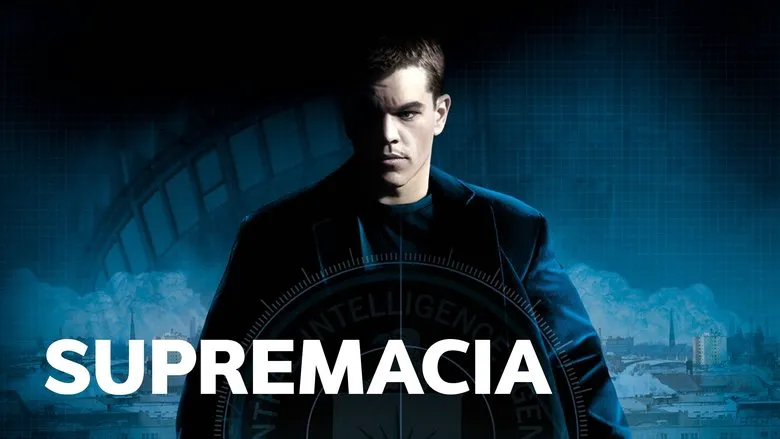In the wake of “The Bourne Identity,” which, along with Robert Ludlum’s source material, effectively buried any semblance of credibility or purpose in international espionage, “The Bourne Supremacy” merely hammered a large iron cross into its grave. Throughout the film, one can’t help but wonder who exactly this is supposed to appeal to. There’s little else to ponder.
A Plot Full of Holes

Matt Damon’s Jason Bourne has been living peacefully with Franka Potente on the island of Goa for three years. However, someone in Berlin carries out a hit, inexplicably leaving Bourne’s traces everywhere. The explanation? “They wanted to get rid of him.” But wasn’t he already disposed of in the first film? Why reawaken a sleeping dog? Yet, the dog is awakened with precision. The Russian killer in Berlin, who targeted Americans with a distinct accent, ends up attacking Bourne’s car in Goa, killing Franka. This isn’t a spoiler; it’s merely the beginning, and already, several things are laughable.
During the car chase between the Russian killer’s vehicle and Bourne’s jeep, the jeep constantly made sharp turns – left and away, right and away – while the killer drove straight ahead. Yet, they never lost each other. It wasn’t meant to be. When the jeep finally plunged into the water, Bourne’s underwater farewell to his murdered lover resembled a twisted version of Hans Christian Andersen’s “The Little Mermaid.” The question isn’t how long a dead mermaid can swim without scuba gear, but rather how many bubbles Bourne released while struggling to escape the jeep with a jammed door, then dragging out the corpse, attempting to revive her, and finally watching her drift to the bottom.

Absurdity Escalates
It only gets worse from there. The awakened dog heads to Europe and is spotted in Naples. The entire city is locked down to prevent Bourne from slipping through with a cell phone stolen from an American consul. The phone contains a conversation between the consul and a CIA agent handling Bourne’s case, revealing valuable information about the location, time, and motivations for his next move. Yet, while evading the massive manhunt, Bourne repeatedly listens to a single line from the recording: “He’s armed and very dangerous. He killed two people in Berlin two weeks ago.” Is this guy mentally challenged? He’s being hunted at every turn, and even after figuring out his destination is Berlin, he distracts himself from driving to listen to how “dangerous” he is?
The scene with the CIA agents in a Berlin hotel is worthy of a high school essay: “What did they do? – They brought all the residents to the entrance and are comparing photos.” And when “Moscow, Moscow, how much is in this sound…” finally arrives, it’s almost unbearable. Thankfully, it’s not because the Winter Palace is located on Red Square; that’s still correct. But from Goa through Naples, Amsterdam, Berlin, and all of Europe, Jason Bourne travels to some remote location with the sole purpose of apologizing to the sweet Oksana Akinshina, the surviving daughter of the oligarch he killed three years ago. He doesn’t remember her, what happened, or why, but when the opportunity to apologize arises, he seizes it. Meanwhile, the CIA, FSB, Interpol, Gestapo, and Siguranza are all chasing him.

From Espionage to Fairy Tale
Once upon a time, coinciding with the “Dr. No” craze, witty Englishmen created the gritty Palmer as a counterpoint to the glamorous Bond, showcasing the true cost of compromising information without bikinis and martinis (“The Ipcress File,” “Funeral in Berlin,” “Billion Dollar Brain”). But as the real foundation of international espionage, the “clash of two systems,” began to resemble a flea market tied to the “dictatorship of American conscience,” Palmer quietly faded away, leaving only the fairy tale of Bond – a magical, sweet fairy tale. If the Bourne adventures intend to inherit the “gritty” legacy today, it’s not about replacing Carlos with a black man (“The Bourne Identity”) or a Chinese bigwig with a Russian oligarch (“The Bourne Supremacy”). It’s about making the spy real enough that the “dictatorship” fears him and ultimately fails. The film could have worked if Jason turned out to be not who he is in the end, but the son of Akhmat Kadyrov, the brother of Yasser Arafat, the in-law of Bin Laden, or better yet, a common “Tamil Tiger.” After all, how far are Tamils from Goans?
Lost in Translation
Unfortunately, Paul Greengrass, who replaced “independent” Doug Liman for the sequel, never forgot during filming that he is known as the winner of the “Golden Bear” at the Berlin Film Festival for “Bloody Sunday” (a dreary reconstruction of the shooting of an Irish demonstration in Ulster in the early 70s). He understood very well that it doesn’t matter what kind of fake dreariness you film; the main thing is the award. And in “The Bourne Supremacy,” any nonsense doesn’t matter; the main thing is that the scheme of this nonsense is identical to the one that made “The Bourne Identity” a super box office hit. Children are caught up in super-self-identification that requires absolutely no effort: “wherever you work, just don’t work.” Therefore, the pathetic Matt Damon is once again the best of us. How he suddenly automatically defeats enemies in a Neapolitan police station. How he crawls down a sheer wall from a Berlin hotel. How he even gives us “self-know-how” again: escaping from Berlin police on a metro bridge at the Zoo station (although the Spree River wasn’t nearby, as in the film), Damon jumps across the tracks right in front of a speeding train, and there hasn’t been such a visually striking trick in a long time.

It will appeal to children who have never seen Berlin, as well as Naples, Amsterdam, Goa, the CIA, FSB, Gestapo, and Siguranza. The only thing that allows us to calmly let children into the cinema is that we are not directly insulted in “The Bourne Supremacy.” Starting from the Kievsky railway station, the supermarket on Kutuzovsky Prospekt, the Krasnopresnenskaya embankment, and the overpass on Mayakovka are filmed correctly, according to the logic of things.are